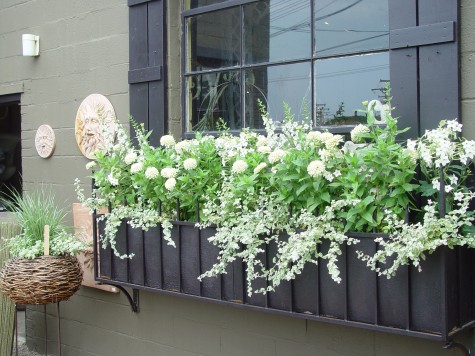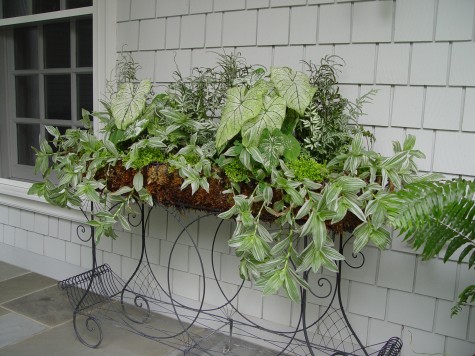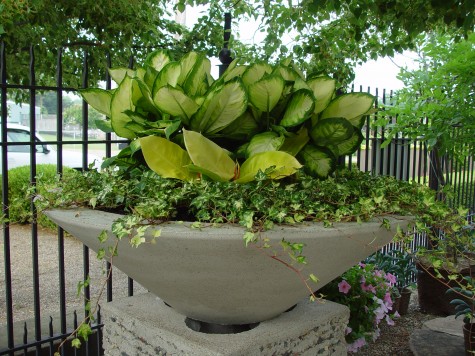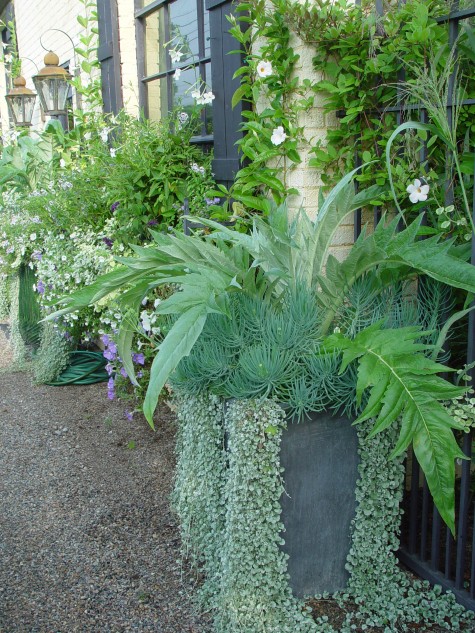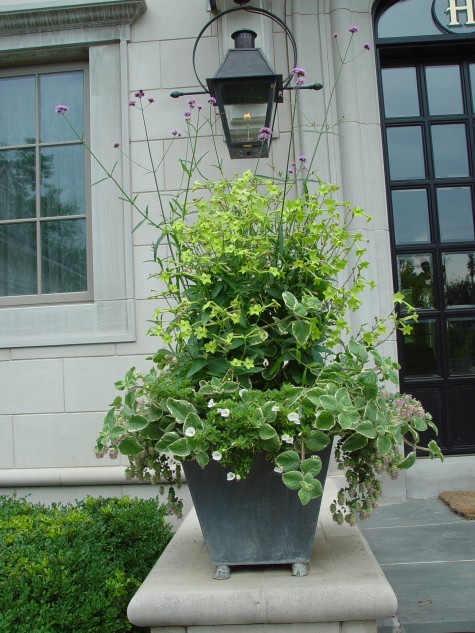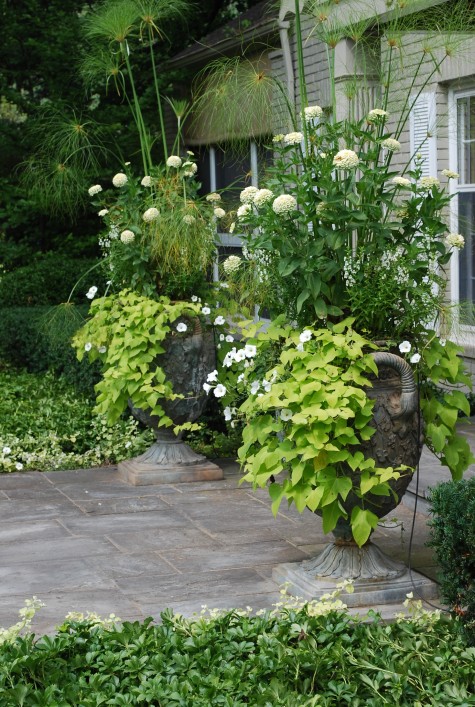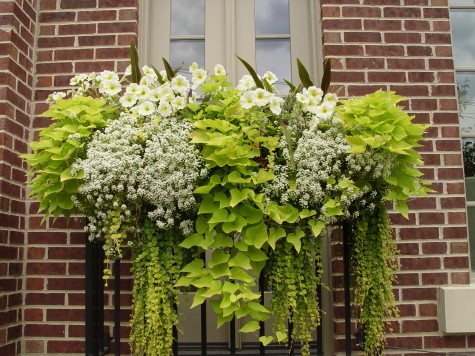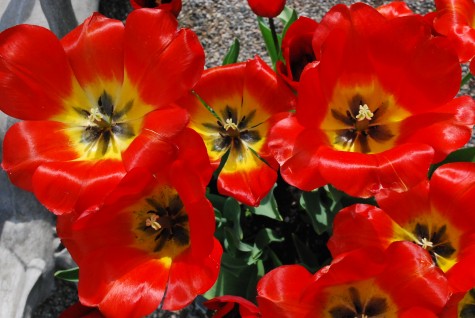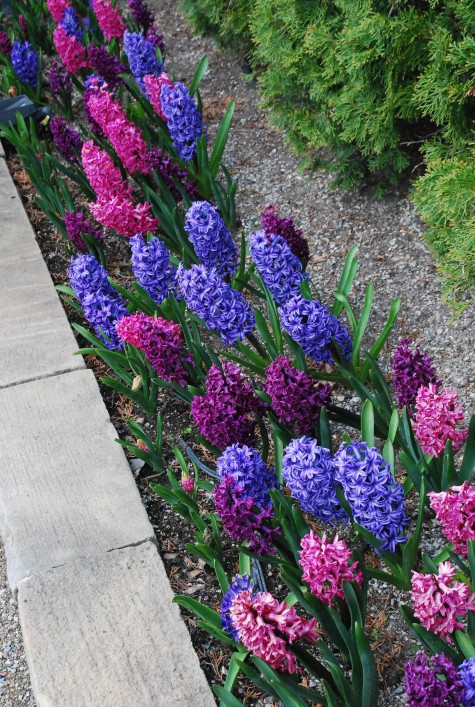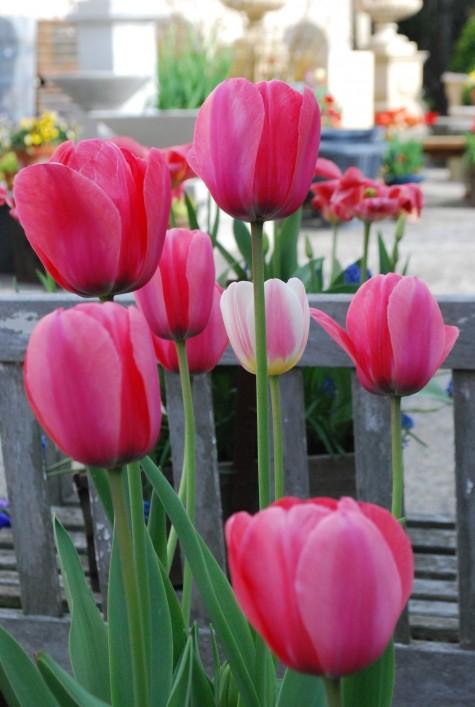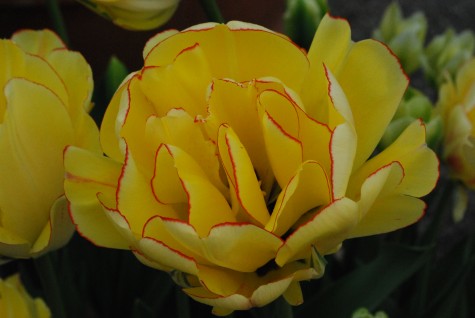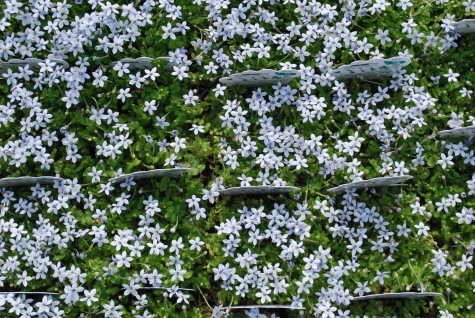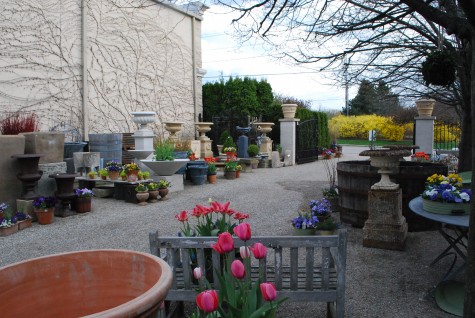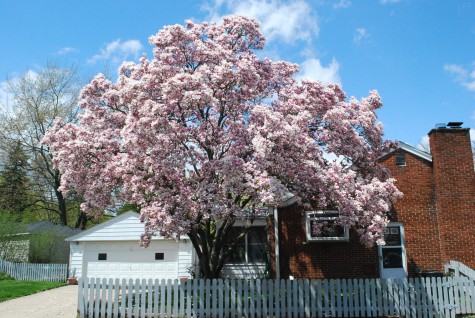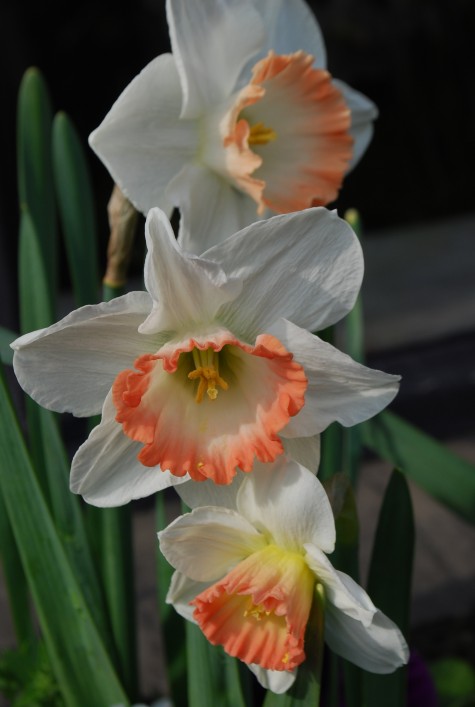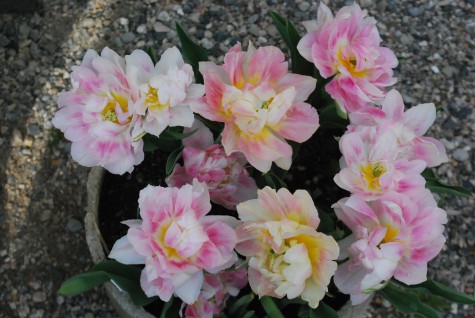 A window box is just about my most favorite container to plant. They represents the best of all possible worlds. The planting area is larger than most containers; I like having lots of space to plant. This means lots of possibilities. Window boxes come without any of the headache of planting large areas in ground. My ground holds water too long. Standing up to plant is a treat. Having planted all manner of plants in the ground the past 30 years, I like having a big body of soil, and a raft of plants, at eye level. The year I broke my leg, this feature was especially appreciated.
A window box is just about my most favorite container to plant. They represents the best of all possible worlds. The planting area is larger than most containers; I like having lots of space to plant. This means lots of possibilities. Window boxes come without any of the headache of planting large areas in ground. My ground holds water too long. Standing up to plant is a treat. Having planted all manner of plants in the ground the past 30 years, I like having a big body of soil, and a raft of plants, at eye level. The year I broke my leg, this feature was especially appreciated.
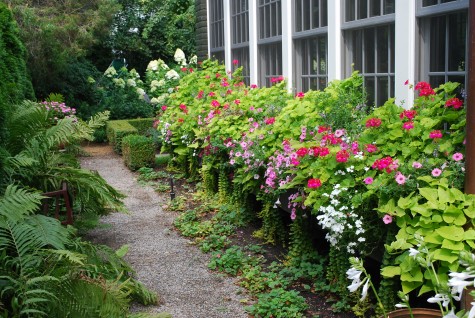 These boxes we built and mounted on the exterior wall of a sun porch. The view from inside is swell. The Persian Queen geraniums, petunias, sweet potato vine and what all else is in these boxes can be easily appreciated at eye level.
These boxes we built and mounted on the exterior wall of a sun porch. The view from inside is swell. The Persian Queen geraniums, petunias, sweet potato vine and what all else is in these boxes can be easily appreciated at eye level.
 Many of the boxes I plant, I have constructed. My main complaint with commercially available windowboxes is that they are not correctly sized to their companion, the window. They are often too narrow, too shallow, and too short-perfect for UPS shipping regulations, but not so great for your garden. A window box needs to be generously sized; a big soil mass will hold water long enough for you take a breather once in a while from your watering chores. If your idea is to have a back row of plants, a middle row, and a front finishing row, the box needs to be 12 inches wide. I like 16 inches deep-lots of soil and drainage material. I like even better a box which is longer that the window in question. Ths permits tall plants on the outside edges that do not obscure your view out. My shop boxes are sized this way. I had room this particular season for datura, cardoons, and cup and saucer vines growing on the walls.
Many of the boxes I plant, I have constructed. My main complaint with commercially available windowboxes is that they are not correctly sized to their companion, the window. They are often too narrow, too shallow, and too short-perfect for UPS shipping regulations, but not so great for your garden. A window box needs to be generously sized; a big soil mass will hold water long enough for you take a breather once in a while from your watering chores. If your idea is to have a back row of plants, a middle row, and a front finishing row, the box needs to be 12 inches wide. I like 16 inches deep-lots of soil and drainage material. I like even better a box which is longer that the window in question. Ths permits tall plants on the outside edges that do not obscure your view out. My shop boxes are sized this way. I had room this particular season for datura, cardoons, and cup and saucer vines growing on the walls.
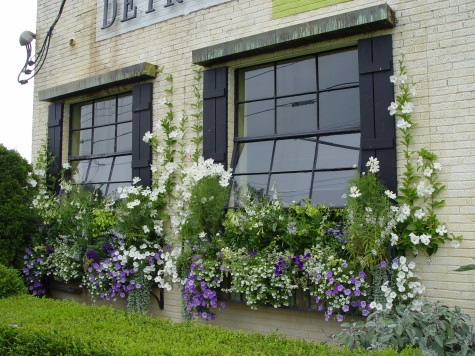 One year I grew white mandevillea on wires on either side of the windows. OK, I was not much looking out of my windows at this point in the summer. But the view is entirely in your control-maybe your boxes need to be mounted to the wall lower that you think. Think about the mature height of the flowers-where do you want that to be? I like my boxes on the wild side-the Sonata white cosmos and lime nicotiana grow large. My boxes are plenty large enough to handle them .
One year I grew white mandevillea on wires on either side of the windows. OK, I was not much looking out of my windows at this point in the summer. But the view is entirely in your control-maybe your boxes need to be mounted to the wall lower that you think. Think about the mature height of the flowers-where do you want that to be? I like my boxes on the wild side-the Sonata white cosmos and lime nicotiana grow large. My boxes are plenty large enough to handle them .

Second story window boxes have a very European flavor. I am sure you have seen those pictures of window boxes stuffed with trailing geraniums on homes and businesses in Switzerland, or the window boxes on the shop walls in London. The planting of window boxes dates back to Roman times, when wall hung boxes were used to grow herbs. The first gardens were of course devoted to growing things to eat. Later, gardens were also devoted to ornamental plants.-I can think of nothing else that will dress a window better for summer than a box stuffed with flowers.
The generous size of a windowbox means you can explore a planting idea in greater depth. Should you be interested in exploring color relationships, you have the opportunity to introduce various shade variations on a theme. If your point of view tends to the contemporary, a box full of one favorite architectural might be just the thing. Should a cottage style garden interest you, a big box will permit you to go wild to your heart’s content.
 Most annual plants are happy in a big box. The soil is good, the drainage is even better. The plants are easy to groom and dead head. The landscape at the shop-trees in the ground, and a decomposed granite covered ground plane. The only flowers I have are from the 7 window boxes, and containers that I plant. The overall impression is of a profusely flowering garden.
Most annual plants are happy in a big box. The soil is good, the drainage is even better. The plants are easy to groom and dead head. The landscape at the shop-trees in the ground, and a decomposed granite covered ground plane. The only flowers I have are from the 7 window boxes, and containers that I plant. The overall impression is of a profusely flowering garden.
 The boxes put the flowers above the level of the boxwood hedge; it is easy to see them. The 11 boxes on the roof can be seen from blocks away. Granted that your taste in gardens may not run to this level of exuberance, but I see part of my job as encouraging people to take up gardening. And that one’s choices of plant material and combinations are many.
The boxes put the flowers above the level of the boxwood hedge; it is easy to see them. The 11 boxes on the roof can be seen from blocks away. Granted that your taste in gardens may not run to this level of exuberance, but I see part of my job as encouraging people to take up gardening. And that one’s choices of plant material and combinations are many.
 This lime, brown and lavender box had a moody feedling to it-I still like it. I cannot remember the name of the copper flowered nicotiana, but it was beautiful. The color of brown sweet potato vine looks great with other colors besides lime-I like it with orange, yellow, and cerise justg as well.
This lime, brown and lavender box had a moody feedling to it-I still like it. I cannot remember the name of the copper flowered nicotiana, but it was beautiful. The color of brown sweet potato vine looks great with other colors besides lime-I like it with orange, yellow, and cerise justg as well.
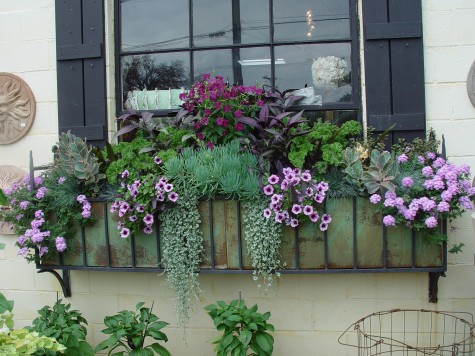
The first year that Perfume Purple nicotiana came out, I was entranced with the color. This box was composed around that one plant. That red-purple color is very unusual-I shoopped all over for plants that might compliment that color. The red markings on the Persian Shield was much the color of the nicotiana. The lavender star verbena and petunia of unknown name did a good job of repeating that color as a pastel version. The blue-green succulent I recently learned is a senecio, and a blue-foliaged kalanchoe (??) seemed like a good foil. What will I do in the boxes this year? Don’t know yet.
